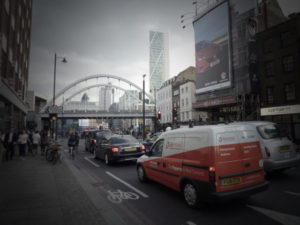New RDE tests criticised for not reflecting rush hour pollution
The “real-world” emission test introduced at the start of September for all new vehicles still needs updating to give an accurate picture of harmful exhaust emissions in rush-hour traffic, according to an independent report.

New RDE tests criticised for not reflecting rush hour pollution
That’s the finding of new tests carried out by emissions testing expert Emissions Analytics in London, commissioned by Greenpeace. Effective now for newly type-approved vehicles, the RDE (Real Driving Emissions) test is carried out by fitting Portable Emissions Measuring (PEMS) equipment to a car to record exhaust emissions at the tailpipe and complements the new Worldwide Harmonised Light Vehicle Test Procedure (WLTP) for fuel economy and CO2 by confirming its results in real life.
However, the latest Emissions Analytics tests suggest that both the testing regime and current diesels on sale may need changes to avoid exceeding legal limits.
Greenpeace commissioned Emissions Analytics to carry out independent testing of two new diesel cars, which saw a 2.0-litre Vauxhall Insignia and 1.6-litre VW Golf assessed during the morning and evening rush hours on commuter routes in and out of London.
Although the Vauxhall Insignia – which with a 2.0-litre engine is fitted with Selective Catalytic Reduction (SCR) emissions control technology – was under the RDE legal limit of 168mg/km on both the morning and evening tests (107 and 111mg/km respectively), it failed on the most congested section – a three-mile stretch between Edgware Road and Angel, Islington, along the A501 – with a figure of 199g/km.
Meanwhile the Volkswagen Golf – which with a 1.6-litre diesel engine is not currently fitted with SCR, although VW has said it will use the technology on all diesels going forward – achieved figures of 226 and 311mg/km for the morning and evening rush hour tests and a figure of 445mg/km for the most congested section.
Emissions Analytics CEO Nick Molden said the research reinforces findings of previous tests and added that further improvements may be required for both the testing regime and for diesels to manage challenges like London’s rush hour.
Molden added: “Other Emissions Analytics testing shows diesels can be cleaner in normal urban and motorway driving. However, the pace of change, or lack of, continues to threaten the future of diesel.”
From a fleet perspective, the findings could demonstrate the need for hybrids to be used in severely congested conditions, adding emphasis to existing calls for operators to not default to diesels and to weigh up the benefits of other fuels.

















